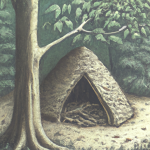“Nature’s Medicine: The Lost Art of Making Herbal Tinctures!”
In times of uncertainty and crisis, being self-reliant and prepared is more important than ever. One skill that can greatly enhance your self-sufficiency is the art of making herbal tinctures. This natural medicine practice has been handed down through generations, offering a powerful way to harness the healing properties of plants.
Herbal tinctures are concentrated extracts made by soaking herbs in a mixture of alcohol and water. This method allows for the extraction of the plant’s medicinal compounds, creating a potent and versatile remedy. Tinctures have a long shelf life and can be easily stored for future use, making them an invaluable addition to any survival pantry.
The process of making herbal tinctures is simple and requires only a few basic ingredients. Here’s a step-by-step guide:
- Choose your herbs: Start by selecting high-quality, organic herbs that are known for their medicinal properties. Each herb carries different benefits, so it’s important to research and select the ones that align with your specific needs. Some popular options include echinacea for immune support, lavender for relaxation, and chamomile for digestive health.
- Prepare the herbs: Once you have your herbs, chop them into small, manageable pieces. This will help release their medicinal compounds during the extraction process.
- Create the tincture: Place the chopped herbs into a glass jar, filling it about one-third to halfway. Pour enough alcohol, such as vodka or rum, to cover the herbs completely. The alcohol acts as a solvent, extracting the active compounds from the plants.
- Label and store: Seal the jar tightly and label it with the name of the herb and the date of creation. Store the jar in a cool, dark place, such as a pantry or cellar. Allow the mixture to steep for at least four to six weeks, remembering to shake the jar gently every few days to promote the extraction process.
- Extract and strain: After the steeping period, it’s time to extract the tincture. Using a cheesecloth or fine mesh strainer, strain the liquid into a clean glass jar or bottle. Squeeze the herbs to extract any remaining liquid and discard the plant matter.
- Bottle and label: Once strained, bottle the tincture in dark glass dropper bottles to protect it from light. Label each bottle with the name of the herb and the date of creation. Properly stored tinctures can last for several years.
Now that you have learned the process, it’s important to understand the benefits and applications of herbal tinctures. These potent remedies can be used to support your overall health, address specific ailments, and even aid in emergency situations.
During times of crisis when medical assistance may be limited or unavailable, herbal tinctures can provide a powerful alternative for treating common ailments. From soothing a sore throat to calming anxiety, there are countless ways to incorporate tinctures into your daily self-care routine.
Remember, knowledge and preparedness are our greatest assets in uncertain times. By learning the art of making herbal tinctures, you are equipping yourself with a valuable skill that can support your health and well-being. Take action now and start building your own collection of herbal tinctures to enhance your self-reliance and preparedness.




GIPHY App Key not set. Please check settings